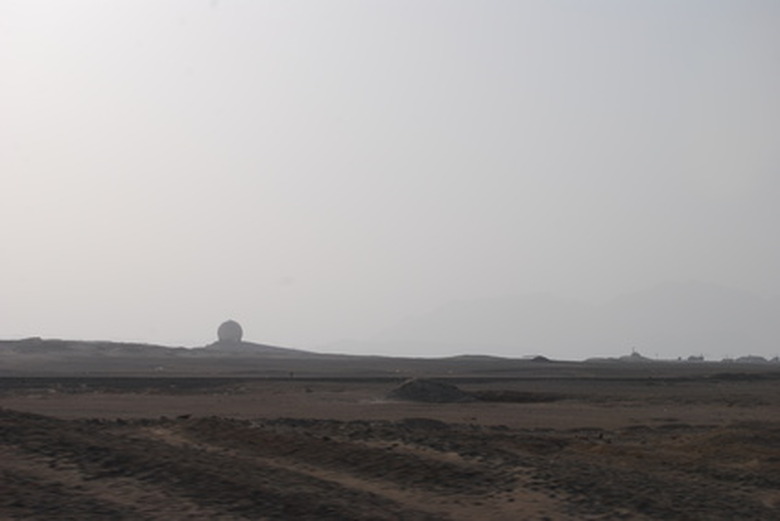Types Of Soil In Egypt
The geography of Egypt is diverse, ranging from the coastal areas of the Red and Mediterranean seas to the Nile Valley, the Sinai peninsula and the Eastern and Western deserts. Egypt comprises of hills, mountains, deserts, rivers and oceans, and features different soils in different areas. Just like its many geographic regions, the soils in Egypt vary from one another, each with its own distinctive qualities and characteristics. Most of the soils are formed through flooding, soil erosion and layering.
Arenosols Soils
Arenosols soils contain particles that are transported or deposited by the wind, known as eolian. These soils are formed when the wind causes particles to "sandblast" or grind against the surface of sandstone or other rocks, leaving behind minute particles called psamments. Psamments can be fine or gravel-like and uneven. Arenosols soils contain fine, coarse or medium grains, and blow around easily with the wind because they contain virtually no water to bind particles together. Arenosols soils in areas such as the Sinai peninsula contain sand along with clay or loam. These soils lack natural nutrients and organic matter, which is why few plants can grow in them easily.
- The geography of Egypt is diverse, ranging from the coastal areas of the Red and Mediterranean seas to the Nile Valley, the Sinai peninsula and the Eastern and Western deserts.
- Arenosols soils in areas such as the Sinai peninsula contain sand along with clay or loam.
Alluvial Soils
Derived from the Latin word meaning "to wash against," these soils are created by fine deposits of sediments that are formed when mountainous rocks erode and end up in lakes, rivers and seas by means of flowing water. Alluvial soils in Egypt are in the Delta and Nile Valley due to the Nile's historical seasonal flooding every year. Alluvial soils formed by deposits of river sediment are known as fluvial. The Nile Valley's alluvial fluvial soil has a fine texture and is extremely fertile because of the organic matter and minerals it contains. Farmers cultivate the land in and around the delta and Nile Valley due to the organic matter, which is beneficial for a healthy and bountiful produce.
Marine Soils
Marine soils exist near the edge or coastal areas of the Mediterranean and Red seas. This type of soil along coastal areas is formed when eroded material and rock fragments travel towards the sea through rivers and streams until they end up on the shore.
- Derived from the Latin word meaning "to wash against," these soils are created by fine deposits of sediments that are formed when mountainous rocks erode and end up in lakes, rivers and seas by means of flowing water.
- Alluvial soils in Egypt are in the Delta and Nile Valley due to the Nile's historical seasonal flooding every year.
Calcareous Soils
Like the marine soils, calcareous soils are also found along shores of Mediterranean and Red seas, but are deposited at the foot of slopes known as colluvial. These soils are formed by a mixture of eroded material and rock fragments that naturally collect at the base of mountains or steep hills.
